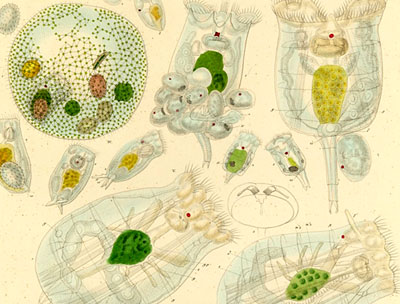 This week we did 2 mini-experiments to investigate how we perceive color. The first was with spinning color wheels. The kids compared the patterns of the discs when still to the patterns they saw when the discs were spun. The second mini-experiment involved looking at magazine pictures under the microscope and comparing the images seen with the naked eye to the colors revealed at greater magnification. Both experiments demonstrate how our brains process stimuli that our eyes receive in either in too short a time or in too small a space.
This week we did 2 mini-experiments to investigate how we perceive color. The first was with spinning color wheels. The kids compared the patterns of the discs when still to the patterns they saw when the discs were spun. The second mini-experiment involved looking at magazine pictures under the microscope and comparing the images seen with the naked eye to the colors revealed at greater magnification. Both experiments demonstrate how our brains process stimuli that our eyes receive in either in too short a time or in too small a space.With the spinning color wheels, when we see 2 colors within a short period of time, our nervous system combines the colors. Pictures in a magazine are actually made up of patterns of tiny dots, placed closely together. Once again your brain can't process them separately and instead combines them to produce the experience of various colors. What is especially cool about the magazine pictures is that no matter what color you "see," when examined under the microscope you realize that the image is made up of just 3 colors: magenta, cyan, and yellow (aka red, blue, and yellow). By producing images that include different ratios of the primary colors, you can get just about any color.
Next time your kids paint, just give them red, blue, and yellow - make them to do the work!




